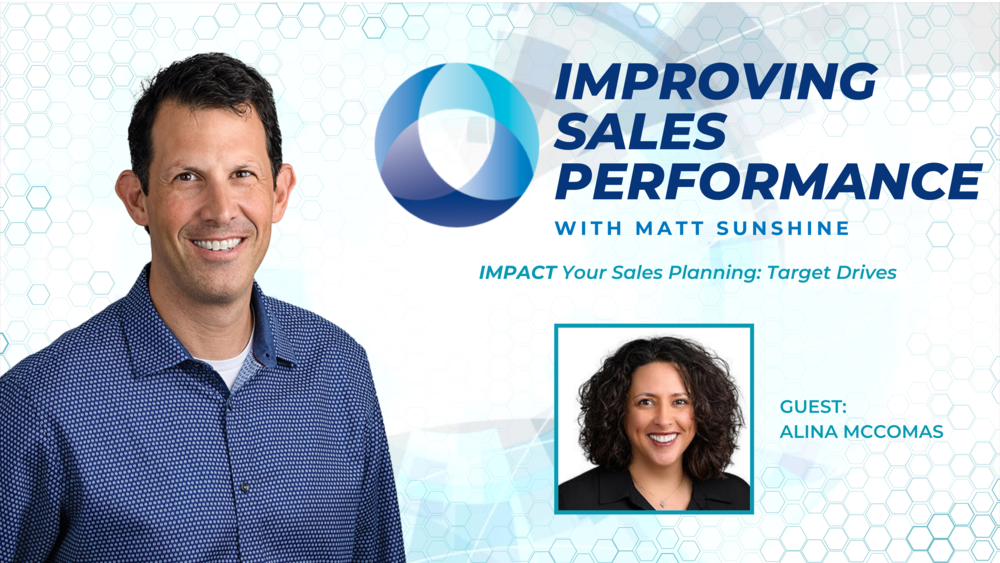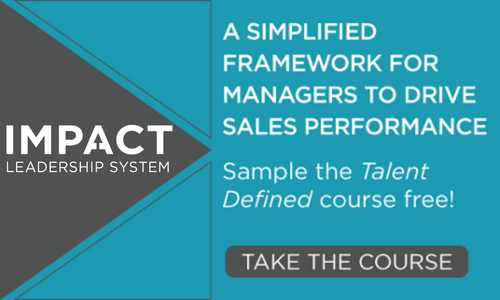
To set your organization up for long-term success, you need more than just a goal. You need a strategic plan, and that’s where target drives come in.
How do you do a target drive? Why do you need help with them? And a question many sales leaders want to know, what does "good" look like?
In this episode, Alina McComas, VP / Senior Consultant at The Center for Sales Strategy, discusses how sales leaders can make an impact on their sales planning through Target Drives. Plus, she gives brand-new data related to top-performers!
Tune in now or keep reading for a brief overview.
What is a Target Drive?
Simply stated, a target drive is a sales tactic designed to drive short-term revenue — typically new revenue.
However, it’s not just about driving new revenue; it’s also about reinforcing the strategy of selling tailored solutions to high priority accounts using a repeatable sales process.
Most target drives that CSS helps clients execute are between 8-12 weeks in length, and they focus on driving total revenue or narrow the focus on a specific category or platform.
As summarized in the broadcast, target drives are a tactic to drive revenue, but that’s certainly not the only good thing that comes from them.
Data Related to Target Drives
Over the last 18 months, McComas has been a part of 11 target drives in some capacity. Five of those focused on individual markets and the others focused on multiple markets. “The smallest multi-market that I’ve been involved with included 10 different markets around the country,” McComas explains. “The largest included 115 markets in one drive cross the county. So, if you look at it by drives it’s about 11. If you look at it by total markets, it’s just over 550.”
With this data in mind, Sunshine asks McComas to share how many sales have been made, how much revenue has been generates, and other interesting data points.
Total sales over the last 18 months = 127 million dollars in new business.
McComas says that other interesting data points she looks at is, “Is that revenue being driven by a small group of salespeople or is it being driven by the larger number of salespeople? When I look at our seller activation rate that’s the number of salespeople, their percentage of salespeople that close at least one piece of new business during the drive.”
She states that we have a seller activation rate of 91%. That means 9 out of 10 salespeople are closing business which is pretty significant when you look at 550 markets. “We have a really good track record of getting everybody engaged, everybody involved.”
For more interesting points related to the difference between top performers and bottom performers, and an in-depth look at the data, tune in now!
How is a Target Drive Different From a Sales Contest?
1. Target Drives are more strategic than a sales contest.
2. Target Drives don't require incentives to be successful.
3. Target Drives provide meaningful insight.
Both a Target Drive and a sales contest can help your team drive revenue, but the reasons behind utilizing one tactic vs. the other are different.
If you're looking for a quick hit, or short-term solution, a sales contest might be all you need. On the other hand, if you need to not only drive revenue, but change behavior and create sustaining habits on how your salespeople approach new business development, a Target Drive is likely the right choice.
What are the Expected Results of a Target Drive?
McComas says there are three simple words that have a lot of pieces to them when you're measuring the success of a target drive:
- Planning
- Focus
- Accountability
If you plan and execute a target drive correctly, you should expect an increase in revenue. And this revenue should be one that you’re able to grow over time.
“You should have enough insights after a focused target drive to see where each person is and how you can help them in area they struggle the most,” states McComas.
Lastly, you should have healthier new business development because you’re focusing on the right types of accounts and deals. You’re holding people accountable during the process, and better habits should be sticking after a target drive.
Don’t miss another episode of the Improving Sales Performance series where Managing Partner Matt Sunshine speaks with thought leaders, experts, and industry gurus, who share their insight, tips, and knowledge on various topics that help companies improve sales performance.
Subscribe to our YouTube channel, and have your notifications on so you’re notified of our next episode!




